Author: Jamie
What to Read: Women in Horror

With spooky season right around the corner I wanted to take the opportunity to highlight some horror books for you all! The one genre that is the nearest and dearest to my heart has always been horror, and in a genre that is often highlighted as being misogynistic, some of the greatest horror stories of our time were written by women. While I could talk for hours about some of the famous greats like Shirley Jackson and Mary Shelley, I wanted to take the opportunity to highlight some of my favorite recent reads by the women that are writing for today’s readers.
Near the Bone by Christina Henry
 Near the Bone has been one of my most recent reads and it cements Christina Henry’s place as an author to watch out for. Most known for her horror and YA dark fantasy retellings of classic fairy tales, Henry has recently been moving steadily more into the horror genre with the releases of Near the Bone and The Ghost Tree. Both books shine a light on the true horrors of being female under the absolute power of men, she doesn’t shy away from shocking violence and grotesque scenes. While I can comfortably recommend both, Near the Bone truly stands out by focusing on two kinds of monsters that lurk in the woods: a supernatural beast and a violent and controlling man. I wasn’t able to put the book down and I feel that it has been one of the scariest books I’ve read in a long while.
Near the Bone has been one of my most recent reads and it cements Christina Henry’s place as an author to watch out for. Most known for her horror and YA dark fantasy retellings of classic fairy tales, Henry has recently been moving steadily more into the horror genre with the releases of Near the Bone and The Ghost Tree. Both books shine a light on the true horrors of being female under the absolute power of men, she doesn’t shy away from shocking violence and grotesque scenes. While I can comfortably recommend both, Near the Bone truly stands out by focusing on two kinds of monsters that lurk in the woods: a supernatural beast and a violent and controlling man. I wasn’t able to put the book down and I feel that it has been one of the scariest books I’ve read in a long while.
The Dangers of Smoking in Bed by Mariana Enríquez
 Mariana Enríquez has quickly become one of my absolute favorite horror short fiction writers after I fell in love with Things We Lost in the Fire when it was released in English a few years ago. Since then I have been chomping at the bit for more of her work to finally be translated to the English language, I can’t even begin to describe the sheer joy I felt when I got my hands on The Dangers of Smoking in Bed before release. Enríquez is an Argentinian author and her stories address the socio-political issues of the country with a strong supernatural twist. This book is filled to the brim with dangerous women, from frenzied fan girls to teen witches. I was absolutely shaken by the new collection, I wish I could scream its praises at the top of my lungs.
Mariana Enríquez has quickly become one of my absolute favorite horror short fiction writers after I fell in love with Things We Lost in the Fire when it was released in English a few years ago. Since then I have been chomping at the bit for more of her work to finally be translated to the English language, I can’t even begin to describe the sheer joy I felt when I got my hands on The Dangers of Smoking in Bed before release. Enríquez is an Argentinian author and her stories address the socio-political issues of the country with a strong supernatural twist. This book is filled to the brim with dangerous women, from frenzied fan girls to teen witches. I was absolutely shaken by the new collection, I wish I could scream its praises at the top of my lungs.
Certain Dark Things by Silvia Moreno-Garcia
 Perhaps one of the buzziest names on this list, Silvia Morena-Garcia has become literature’s new sweetheart after the breakout success of Mexican Gothic last year. The great thing about the increased visibility of an established writer is the large catalog of previous works, as is the case of Certain Dark Things. Originally published in 2016, the book quickly went out of print after the collapse of her previous publisher. This book has recently been republished by Tor Nightfire and I am honestly so happy that this book has been given a second chance because it is simply outstanding. Shaking up traditional vampire folklore with Aztec vampires and others that came from different backgrounds, a dash of noir, and some truly fun characters, this book has shot up to one of my favorite vampire books of all time. I hope that the wave of attention will lift this book up to its rightful place as a classic in the genre.
Perhaps one of the buzziest names on this list, Silvia Morena-Garcia has become literature’s new sweetheart after the breakout success of Mexican Gothic last year. The great thing about the increased visibility of an established writer is the large catalog of previous works, as is the case of Certain Dark Things. Originally published in 2016, the book quickly went out of print after the collapse of her previous publisher. This book has recently been republished by Tor Nightfire and I am honestly so happy that this book has been given a second chance because it is simply outstanding. Shaking up traditional vampire folklore with Aztec vampires and others that came from different backgrounds, a dash of noir, and some truly fun characters, this book has shot up to one of my favorite vampire books of all time. I hope that the wave of attention will lift this book up to its rightful place as a classic in the genre.
Lady Bits by Kate Jonez
 I am always so happy when I can find a lesser-known author that manages to blow me away. Kate Jonez has been nominated a handful of times for prestigious horror awards yet her work goes under the radar from the greater reading public. Lady Bits is a fantastic short story collection, the very first story starts the book off with a bang and the pace never lets up. I greatly enjoyed almost every story in the collection and found myself delighting in the grisly kills of the dangerous women that lead each story. My favorite stories dive into the southern gothic, from runaway street tramps to the quiet horror of motherhood, Lady Bits is an utter pleasure to read.
I am always so happy when I can find a lesser-known author that manages to blow me away. Kate Jonez has been nominated a handful of times for prestigious horror awards yet her work goes under the radar from the greater reading public. Lady Bits is a fantastic short story collection, the very first story starts the book off with a bang and the pace never lets up. I greatly enjoyed almost every story in the collection and found myself delighting in the grisly kills of the dangerous women that lead each story. My favorite stories dive into the southern gothic, from runaway street tramps to the quiet horror of motherhood, Lady Bits is an utter pleasure to read.
Tender Is the Flesh by Agustina Bazterrica
 Returning again to outstanding Argentinian writers, my hands down favorite book of 2020 was Tender is the Flesh, a nightmare dystopia about state-sanctioned cannibalism. This book is a stark reminder of the difference between fear and all-out gut-wrenching horror. While the main character of the novel is a grieving father, the female horror in this book is undeniable as the main character is saddled with a prized heffer, a young woman fit for slaughter. This book’s pacing is unrelenting as the reader is given a guided tour of the menagerie of atrocities inflicted on our fellow man in the name of keeping the meat industry alive after a natural disaster makes animal meat inedible. Political, provocative, punchy, Tender is the Flesh will challenge the reader’s morality as well as their stomachs.
Returning again to outstanding Argentinian writers, my hands down favorite book of 2020 was Tender is the Flesh, a nightmare dystopia about state-sanctioned cannibalism. This book is a stark reminder of the difference between fear and all-out gut-wrenching horror. While the main character of the novel is a grieving father, the female horror in this book is undeniable as the main character is saddled with a prized heffer, a young woman fit for slaughter. This book’s pacing is unrelenting as the reader is given a guided tour of the menagerie of atrocities inflicted on our fellow man in the name of keeping the meat industry alive after a natural disaster makes animal meat inedible. Political, provocative, punchy, Tender is the Flesh will challenge the reader’s morality as well as their stomachs.
Additional Reading
To close out, I wanted to include a few links to some wonderful articles that I enjoyed about women in horror.
Prologue – Gymnopédies –

My Thoughts
Prologue – Gymnopédies – is a surprising little manga collection that I found on a whim while looking for more work by Natsujikei Miyazaki. It is part of a project that seeks to collaborate between manga and music, a novel concept. The music that inspired this collection is Gymnopédies by Erik Satie. Six lesser-known mangakas were asked to create a short one-shot manga that is inspired by the titular track.
 Gymnopédies is a soft piano track that to me elicited a dreamy yet somber feeling. I felt that most of the manga fit the theme of the music well, and I enjoyed reading it while listening to the track in the background. Some of the manga didn’t contain a single line of text or dialogue, such as in Gentle Water and A Certain Student Gymnopedies, yet both pieces had some of the greatest impacts on the reading experience.
Gymnopédies is a soft piano track that to me elicited a dreamy yet somber feeling. I felt that most of the manga fit the theme of the music well, and I enjoyed reading it while listening to the track in the background. Some of the manga didn’t contain a single line of text or dialogue, such as in Gentle Water and A Certain Student Gymnopedies, yet both pieces had some of the greatest impacts on the reading experience.
The art styles varied wildly but each had a degree of charm, I was particularly impressed with the art styles of Yoso Machi and Murai. For a Quiet Night’s Sleep was by far my favorite and it was the most heartfelt of the entire collection. The art was beautiful and the story was really touching. I didn’t care much for Déjà vu nor Slowly, as if in pain, though the latter at least had a little bit of humor.
In all, this was an obscure and charming little collection that makes for a relaxing read that can be completed it one sitting. It is highly recommended to read it while listening to the accompanying track, as it is the way it is intended to be read and it really adds to the reading experience.
Rating:

Peach Girl
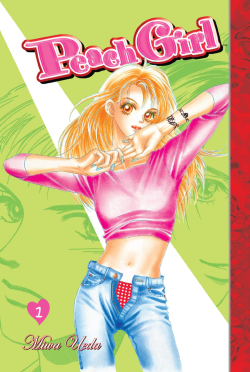
Also in this series: Peach Girl: Sae’s Story, Peach Girl NEXT
Also by this author: Pre Mari, Loco Moco, Papillon: Flower & Butterfly
Warnings: Violence, Sexual Assault, Kidnapping, Bullying, Statutory Rape, Abuse
My Thoughts
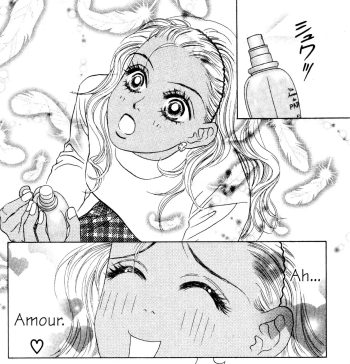 Peach Girl is a nostalgic series for me, it is one of the first shojo series that I really got hooked onto. I loved the bold art style and the characters, the romance, the drama. I really related a lot to Momo, an outgoing but insecure girl that worries about her tanned skin and struggles with a manipulative and jealous friend, Sae.
Peach Girl is a nostalgic series for me, it is one of the first shojo series that I really got hooked onto. I loved the bold art style and the characters, the romance, the drama. I really related a lot to Momo, an outgoing but insecure girl that worries about her tanned skin and struggles with a manipulative and jealous friend, Sae.
This manga struck a chord with me particularly because of the duality between Momo and Sae. I knew a girl that was a lot like her when I was growing up, she always seemed to be changing to fit around other people. Every girl in our friend group came to resent her because she always found a way to get her hooks into other people’s crushes, boyfriends, and later in life a husband, and usually threw all of those boys away after causing a break-up. I never understood that girl, what motivated her, and what she really got out of these things. This was what made Peach Girl so memorable to me, it perfectly encapsulated a part of my life and it reminded me so much of that time.
Going back to this series as an adult, however, I found myself feeling really conflicted about this series. The story starts off strong, it’s so easy to cheer for Momo with an antagonist like Sae. The romance was believable and sincere, and despite some ups and downs everything felt contained. By the fifth volume, however, things started to go downhill and fast. The drama spirals so drastically out of control, and sexual assault is used as a plot point, and again as a scheme for revenge. It was never treated with any real care and it is gut-wrenching that it was used flippantly for a dramatic story arc. There are other very huge problems later on in the series with plot points that are hideously inappropriate. It left a bad taste in my mouth, but I tried to look past this as being a story of its time.
Even putting that all aside, characters seemed to change their minds so quickly and everything always felt so melodramatic and blown out of proportion. Momo finds herself in a love triangle with two equally wonderful and toxic boys and was hurt over and over again. After eighteen volumes, it frankly became exhausting. The indecisiveness of the characters becomes so frustrating, and I stopped caring about any of the characters.
It is the type of pop drama that was popular when I was a teenager, and it’s amazing that there is both a spin-off and a sequel because it all feels like a never-ending empty trashy drama. I wanted so much to love this series, and for it to be one of my all-time favorites, but I just can’t get past the problematic content to love this series, it just carried on for far too long and went way too far.
“I can’t hold your heart prisoner. And people’s feelings change with time. If your heart isn’t really with me, I don’t want you to feel guilty about it.”
Rating:

Loco Moco
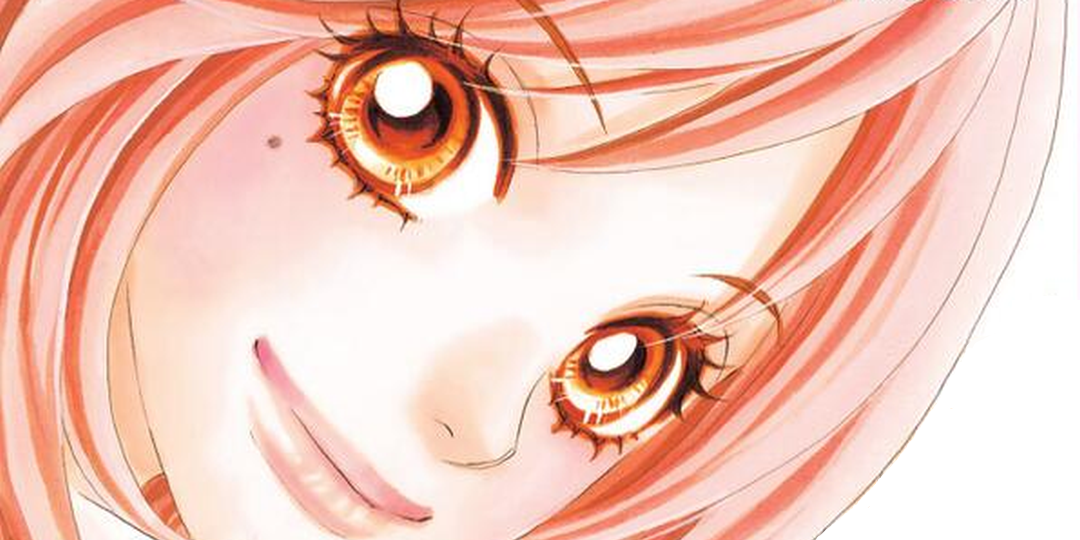
Also by this author: Pre Mari, Peach Girl, Papillon: Flower & Butterfly
My Thoughts
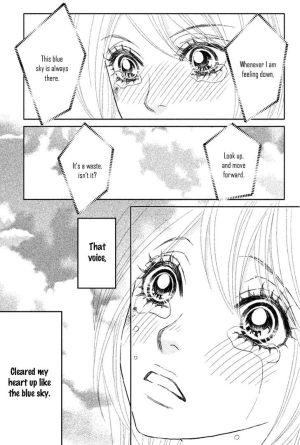 Love confessions are one of those things from my youth that I honestly miss. Confessing to the person that you have a crush on is nerve-wracking, and when looking back there are often so many missed opportunities. I remember the crushing feeling the first time I found out that a high school crush that I had been nursing for months ended up becoming a friend’s boyfriend. This happened a few times, I never felt sour about it but shrugged it off that I was just too slow to act on those feelings.
Love confessions are one of those things from my youth that I honestly miss. Confessing to the person that you have a crush on is nerve-wracking, and when looking back there are often so many missed opportunities. I remember the crushing feeling the first time I found out that a high school crush that I had been nursing for months ended up becoming a friend’s boyfriend. This happened a few times, I never felt sour about it but shrugged it off that I was just too slow to act on those feelings.
This feeling of being too slow forms the basis of Loco Moco. Hiroko feels that she has to keep up with her childhood friend, Tomoko, who seems to have a new boyfriend all the time, so she plays along and brags about having boyfriends as well. When Hiroko finally gathers up the courage to confess to her crush, however, she finds out that her crush is her friend’s new boyfriend.
“Roko-chan, have you tried getting confessed to?”
Loco Moco is a short and sweet series about this predicament, about missed opportunities and trying to cope with a crush that has now become unattainable. While Takeru also has a mild interest in Hiroko, it’s understandable that he dates that cute girl that confesses to him. While the drama between Hiroko and Tomoko could at times be petty, it is understandable when they both realize that the other is a romantic rival.
While Roko and Tomo butt heads at times, their friendship remains intact, and they choose to do what’s best for their friend which made me happy to see a good female friendship take precedence over one’s romantic feelings. There are a few character traits that seem to reappear in all of Ueda’s series, namely the protagonist having a complex about being misunderstood for a physical trait and having a jealous best friend.
I’m glad that I didn’t give up on Ueda’s work, I love her art and characters, but I honestly got mad with the last two Ueda works that I had read. Compared to other works by Miwa Ueda, Loco Moco is relatively tame which I feel made it better. It’s an underrated gem that tackles the drama that comes with crushing on a friend’s boyfriend with relative maturity.
Rating:

2020 Books & Reading Stats

I know that I am late to the party on posting my 2020 stats, it hadn’t occurred to me that creating one of these might be fun until this past weekend and I wanted to share my reading year. 2020 was a tumultuous year both in my personal and professional life; I finished my master’s degree, I was promoted up near the beginning of the year and then again laterally in December, I faced the deepest suicidal depression that I had experienced in years, and I was able to kick my reading slump that has lasted from 2018 all the way until May 2020. So to keep myself motivated to keep reading and reviewing, I wanted to share some of the interesting book related stats as well as share my overall top 5 favorites for this year.
Reading Stats

Pages: 16,905
Average Length: 167 pages
Shortest Read: 21 pages (Graceful Burdens by Roxane Gay)
Longest Read: 426 pages (The Ghost Tree by Christina Henry)
Top Genre: Horror
I ended the year with more overall “books” than I have read ever, though that number is fluffed greatly by stand alone manga and manhwa volumes. I fell in love with manga all over again and read more manga in the last few months than I had read in several years. How or why I couldn’t tell you really, I wanted to explore some new manga artists and was interested in jumping into some new genres, like yuri. How fluffed up exactly? In all I read 63 volumes worth of manga across 23 series, and 4 volumes of manhwa comprising of only 1 series.
As for books, my top genre this year was unsurprisingly horror, it IS my favorite genre, but this is the first year that it took the crown. The last few years have been a hodge podge of different genres, and being a lover of all things horror I really wanted to dive head first into all the horror I could.
Authors
I think it’s safe to say that I prefer female authors over male authors, especially when it comes to books. For graphic novels, manga, and manhwa the number was a little more even with a slight leaning toward female authors. For both charts I only counted authors once, and for graphic novels I included both authors and illustrators if it was an original work, and only the illustrator if the work was adapted from a book.

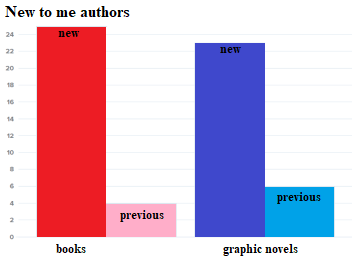 Now as far as whether or not an author or artist was new to me, there is a clear bias toward new works this year. Again for this chart, I only included authors on here once, though honestly besides manga I only read one book series anyway, and it was by an author that was totally new to me.
Now as far as whether or not an author or artist was new to me, there is a clear bias toward new works this year. Again for this chart, I only included authors on here once, though honestly besides manga I only read one book series anyway, and it was by an author that was totally new to me.
I’ve begun to notice on my reviews list that I tend to only have 1-2 books by any given author. I tend to prefer standalones versus series when it comes to books, and though there are plenty of authors that I end up loving and I end up searching out their books and adding them to my TBR, it seems my chances of repeats is low.
I think part of this stems from the fact that I tend to read review copies of books, which are easier to acquire for new and upcoming authors. I also read a lot of Amazon’s collections as a way of sampling works by different authors to decide whether or not I want to read more of their work and also because I like short fiction in general, so that likely contributes to this as well.
Seeing this chart almost makes me want to challenge myself to spent a good portion of this year in 2021 picking up books by authors I have already enjoyed previously. It will be a bit hard, because I also have a large number of ARCs I want to catch up on and I got a handful of really exciting ones, so we’ll have to see next year?
Favorite Books
Tender is the Flesh by Augustina Bazterrica: This was without a doubt one of my top two favorite books of the year, I was blown away by the sheer existential horror of this little book. The story is about a state sanctioned cannibalism, and the most shocking part of all is how normalized it is. This book pulls no punches and will either enthrall or disgust readers.
Goth by Otsuichi: Goth was the second contender for my top spot this year and when I finished I wanted immediately to re-read it. It’s a light novel so the plot and characters almost feel like they belong in an anime, but it is very much grounded in brutal, cruel reality. Goth is a collection of short stories about two teenagers that are dangerously obsessed with serial killers, it is unabashedly dark and just plain fun.

The Dangers of Smoking in Bed by Mariana Enríquez: I had the joy of reading an ARC copy of Enríquez’s Things We Lost in the Fire and I was impressed by her writing, I had been keen to read more of her work. I was so excited that I was granted an ARC of The Dangers of Smoking in Bed and this collection far surpassed the first in terms of the quality of the stories and sheer style. It is an incredible collection of horror short fiction that I haven’t been able to stop thinking about since I finished it.
Looking for Alaska by John Green: I almost didn’t add this book to my list and even now, I am still struggling to put all of my thoughts and feelings together on this book to write a review. I bought it as a gift for my husband because Green was inspired by my husband’s favorite book, As Simple As Snow by Gregory Galloway. We read it together and both loved the book, and we promptly watched the Hulu adaptation after. It’s a great book and it is clear to see why it catapaulted Green’s career in YA. It reminded me of my teen years in the early 2000s, where I attended a private Christian school, so I feel that also added to my appreciation for the book.
To All the Boys I’ve Loved Before by Jenny Han: I had been admiring this book series’ covers for years and missed all of the hype when it was still being published. I don’t normally read contemporary romance and especially not YA romance, but I got the boxed set on wholesale so I thought, why not? This was the book series that broke my reading slump and I fell head over heels in love with it, I binged all three volumes in a week. It was my guilty pleasure last year and when I finished, I immediately picked up all of Jenny Han’s other book series. I watched Cindy’s videos where she watched the movies and I was less than impressed, so I’m glad that I read the books first.
Favorite Graphic Novels
Killing Stalking by Koogi: This one was a bit unexpected and I can’t pinpoint what drove me to pick it up in the first place but Killing Stalking quickly made it onto my list of all-time favorite comics. I had seen the series floating around for years and had stayed clear due to the warnings about rape and the abusive relationship between the protagonists. However, Killing Stalking exceeded my expectations as a cat and mouse crime thriller that veers straight into horror.
Venus in the Blind Spot by Junji Ito: Finding Junji Ito on my best-of list is never any surprise, but I have to say that Venus in the Blind Spot is among one of his best short story collections that I can easily recommend to a new reader as a first pick. This is a new collection for western audiences that collects some of Ito’s most famous or previously uncollected one-shots into one volume.

Bloom Into You by Nio Nakatani: So I had wanted to try giving the Yuri genre a read and actually started with Citrus. Bloom Into You was one of the series that was recommended to me on Goodreads because I was reading Citrus and I am so thankful for that recommendation. Besides being one of the best yuri manga series I had ever read, I feel that it is one of the best romance mangas I have ever read period. There is some good aromantic and demiromantic representation here, and I found myself relating heavily to the main character, Yuu.
Remina by Junji Ito: This one barely made it onto the list, Remina came in as a 4 star read for me. While there are other manga that I rated higher, I found this one to be more memorable and a better quality piece overall. It is one of Ito’s underappreciated gems and is one of his works that is gloriously Lovecraftian. While it is not my favorite of his works, I 100% understand why some folks list this one as their favorite.
Beautiful Darkness by Fabien Vehlmann & Kerascoët: I found this book on a list of horror graphic novels and was incredibly curious. The little fae creatures don’t immediately appear to be characters in a horror piece until the reader sees the decaying corpse that they sprang to life from. This little graphic novel was a complete surprise and was one of the most unique pieces of horror literature that I’ve ever read.